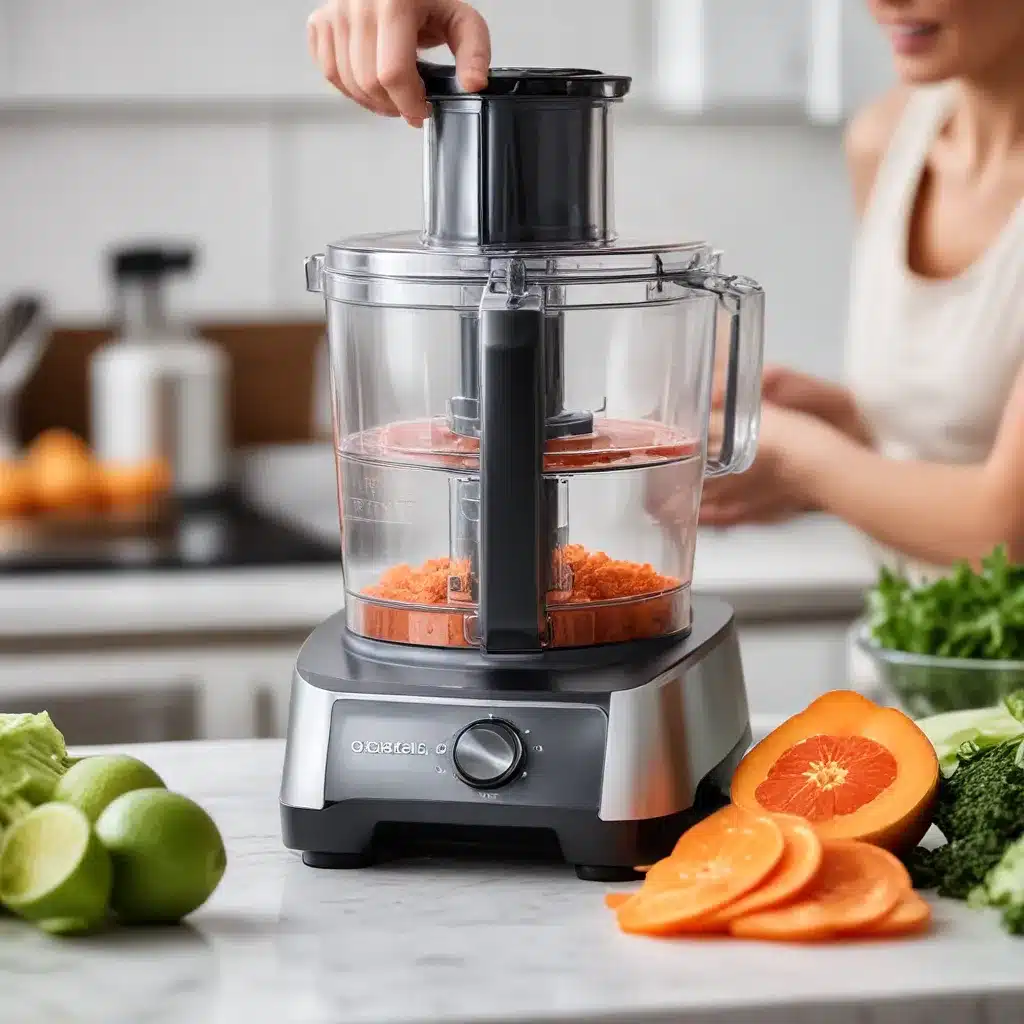
Unleashing the Full Potential of Your Food Processor
As a seasoned culinary professional, I’ve come to appreciate the transformative power of a high-quality food processor. These versatile kitchen companions can slice, shred, chop, and puree ingredients with unparalleled precision, unlocking a world of culinary possibilities. However, to keep your food processor performing at its best, it’s essential to maintain it with the utmost care. In this comprehensive guide, we’ll dive into the secrets of optimal food processor maintenance, exploring the art of cleaning and blade care.
Cleaning Your Food Processor: A Spotless Path to Perfection
Maintaining a clean food processor isn’t just about appearances – it’s a crucial factor in ensuring optimal performance and longevity. Regular cleaning not only keeps your machine looking its best but also prevents the buildup of food residue that can impede its functionality.
The Quickest Cleaning Routine
The fastest and easiest way to clean your food processor is to let the machine do most of the work for you. After each use, simply rinse the bowl and blades with warm water to prevent any dried-on food particles. For a more thorough clean, blend warm water with a few drops of mild dish soap for about a minute, or run the self-cleaning program if your food processor is equipped with one.
Tackling Stubborn Residue
Even with regular rinsing, certain ingredients like nut butters or thick dips can leave behind stubborn residue. In such cases, start by following the basic cleaning instructions once more, repeating the process if necessary. If there’s still some lingering gunk, use a soft-bristled brush or a damp cloth to gently scrub the remaining areas, taking care not to damage the blades or any delicate components.
Keeping Your Blades Sparkling
The blades of your food processor are the heart of the machine, and keeping them clean is crucial for both performance and safety. After each use, be sure to remove any food particles that may have gotten caught between the blades. You can use a soft-bristled brush or a toothpick to gently dislodge any stubborn bits. Once the blades are free of debris, rinse them thoroughly with warm, soapy water.
Preventing Cloudy Buildup
Over time, your food processor’s bowl may develop a cloudy film, which can make it appear dirty even after thorough cleaning. This hazy residue is often the result of blending mineral-rich ingredients, such as fruits and vegetables, or the effects of hard water in your area.
To remove this cloudy buildup, try soaking the bowl in a solution of one part white vinegar and one part warm water. Let it soak for several hours or overnight, then rinse and scrub the bowl with a soft cloth. If the vinegar method doesn’t do the trick, make a paste with baking soda and water, and gently rub it onto the interior of the bowl using a soft cloth.
Caring for Accessories and Attachments
Beyond the main components, proper care for your food processor’s accessories and attachments is essential. Most lids, discs, and other removable parts are dishwasher-safe, making cleaning a breeze. Be sure to check your owner’s manual to determine which items can safely be washed in the dishwasher.
Maintaining Blade Sharpness: The Key to Precision Cutting
The blades of your food processor are the true workhorse of the machine, responsible for the smooth, even cuts that make meal prep a breeze. Proper blade maintenance is crucial to ensuring consistent performance and extending the life of your food processor.
Sharpen with Care
Over time, the blades of your food processor may become dull, requiring occasional sharpening. When it’s time to sharpen, it’s best to consult the manufacturer’s recommendations or seek the assistance of a professional sharpening service. Attempting to sharpen the blades yourself can be risky and may result in uneven or jagged edges.
Avoid Dull Blades
One of the most common mistakes food processor owners make is trying to use dull blades. Forcing the machine to work with blades that have lost their edge can put unnecessary strain on the motor, potentially leading to premature wear and tear. If you notice your food processor struggling to slice, chop, or puree ingredients as efficiently as it once did, it’s a clear sign that the blades need attention.
Proper Blade Storage
When not in use, it’s essential to store your food processor’s blades safely. Keep them in a designated blade storage compartment or wrap them in a protective sheath to prevent accidental cuts and preserve their sharp edges.
Extending the Life of Your Food Processor
By following the cleaning and blade maintenance tips outlined in this guide, you can ensure that your food processor remains a reliable and high-performing kitchen companion for years to come. Remember, investing a little time in proper care and maintenance can go a long way in unlocking the full potential of your machine and delivering consistent, delicious results in the kitchen.
For more inspiration and culinary insights, be sure to visit the Kitchen Warrior blog. Our team of seasoned culinary professionals is dedicated to providing practical tips, in-depth guides, and innovative recipes to help you unlock your inner kitchen warrior.
Key Takeaways
- Regularly clean your food processor after each use to prevent the buildup of food residue.
- Use a soft-bristled brush or cloth to gently scrub the blades and remove any stubborn debris.
- Soak the bowl in a vinegar-water solution or a baking soda paste to remove cloudy film buildup.
- Consult the manufacturer’s recommendations when sharpening the blades, and avoid attempting to sharpen them yourself.
- Store the blades safely when not in use to preserve their sharp edges.
- With proper care and maintenance, your food processor can be a reliable kitchen companion for years to come.


